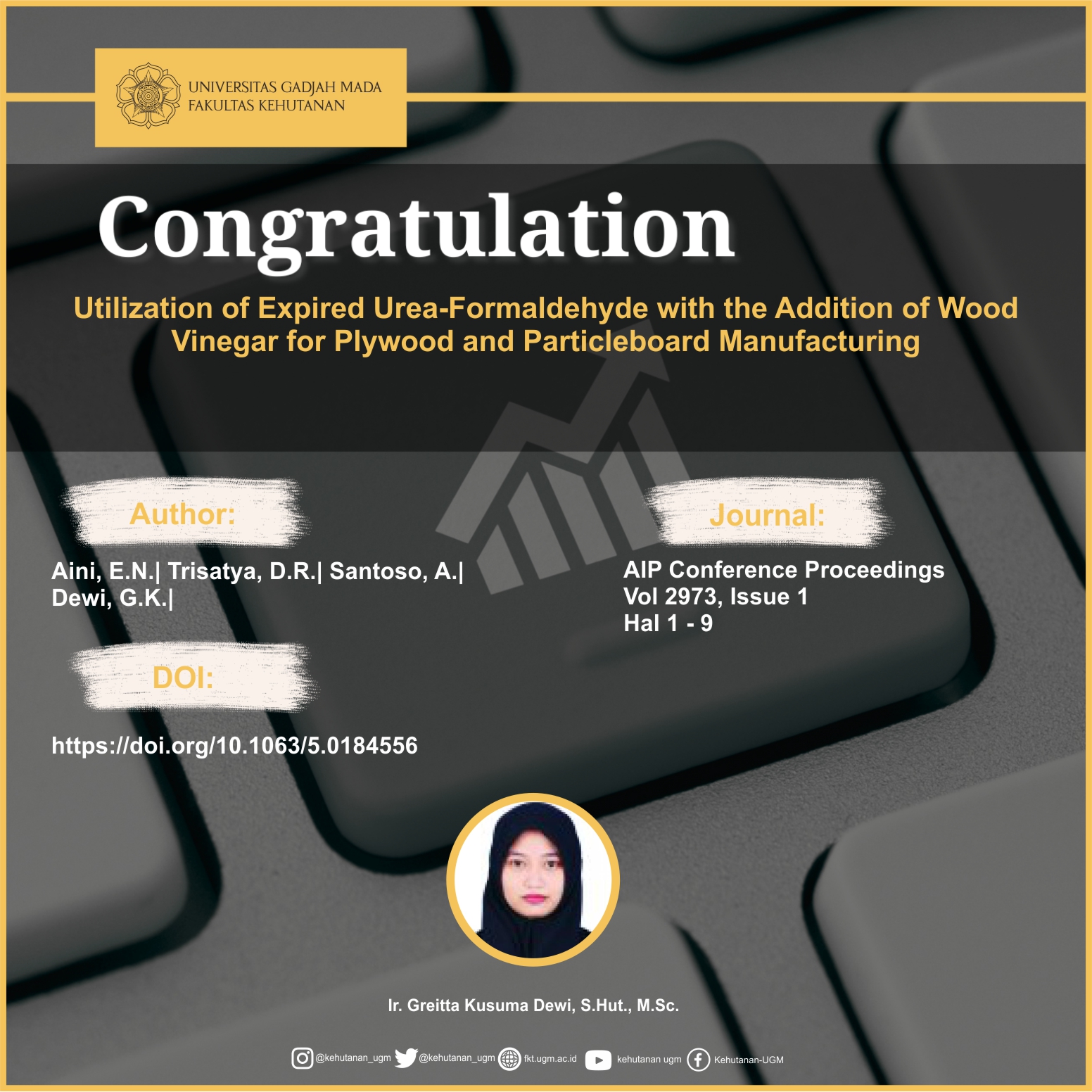
Abstract
Expired glue is one of the wastes generated from the adhesive and wood processing industries. Non-optimal management of expired glue can cause financial loss and environmental danger. This research tries to utilize the expired urea-formaldehyde (UF) glue with the addition of wood vinegar for producing composite products, i.e., for plywood and recycled particleboard. The materials used in this research were urea-formaldehyde glue past ±6 months from its shelf life/expiration date, wood vinegar from mixed wood, mangium wood veneer, and rubberwood particleboard waste. The manufacture of plywood was done using a glue spread of 170 g/cm², a cold press for 10 min followed by a hot press for 3 min with specific pressure of 12 kg/cm². The particleboard was fabricated using the following conditions: 10 wt% adhesive content, press temperature of 120°C for 10 min, and specific pressure of 25 kg/cm². The addition of wood vinegar decreases solid content and adhesive acidity. Meanwhile, adding wood vinegar tends to increase both composite products’ properties. The best properties of plywood and particleboard are obtained at 30% wood vinegar composition. Acacia plywood bonded with expired UF-30% wood vinegar has a dry shear strength of 16.48 kg/cm², wet shear strength of 14.89 kg/cm², and formaldehyde emission of 0.49 mg/L. Recycled rubberwood particleboard bonded with expired UF-30% wood vinegar has an internal bond strength of 3.65 kg/cm², modulus of rupture of 187.28 kg/cm², modulus of elasticity of 25149.2 kg/cm², screw-holding strength of 61.60 kg, and formaldehyde emission of 3.12 mg/L. The expired UF that has not fully hardened yet was still able to produce composite products with adequate quality, as shown by all properties of plywood and particleboard produced in this research can meet the SNI requirements.
SDGs:
1. SDGs 3:Good Health and Well-being
2. SDGs 9:Industry, Innovation, and Infrastructure
3. SDGs 12:Responsible Consumption and Production
4. SDGs 15:Life on Land
Link Dokumen:
Download
